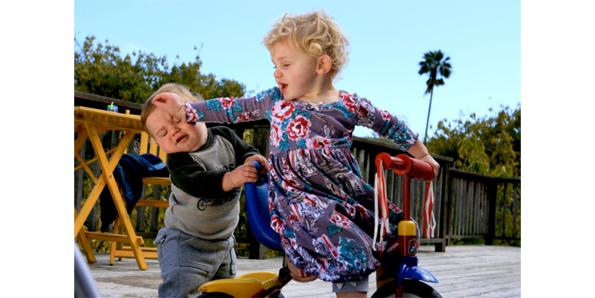CHILDREN LEARN WHAT THEY LIVE.
If children live with criticism, they learn to condemn.
If children live with hostility, they learn to fight.
If children live with fear, they learn to be apprehensive.
If children live with pity, they learn to feel sorry for themselves.
If children live with ridicule, they learn to feel shy.
If children live with jealousy, they learn to feel envy.
If children live with shame, they learn to feel guilty.
If children live with encouragement, they learn confidence.
If children live with tolerance, they learn patience.
If children live with praise, they learn appreciation.
If children live with acceptance, they learn to love.
If children live with approval, they learn to like themselves.
If children live with recognition, they learn it is good to have a goal.
If children live with sharing, they learn generosity.
If children live with honesty, they learn truthfulness.
If children live with fairness, they learn justice.
If children live with kindness and consideration, they learn respect.
If children live with security, they learn to have faith in themselves and in those about them.
If children live with friendliness, they learn the world is a nice place in which to live.
1. Bunking
Bunking school starts as a one-time fun activity but it soon grows into a habit. And bunking school is cool what a child thinks! It is not a minor issue and should be nipped in the bud. Leaving home for extended periods of time without parental permission, patterns of seeking comfort from a non-custodial parent or other relative when situations are tough at home, crossing state lines or leaving home in the middle of the night or for several days at a time are all characteristic of problematic running away behavior in children. Running away causes severe safety concerns in children. This behavior indicates bigger problems at home between parents and children or might signal an issue with abuse or domestic violence. Improving this behavior includes recognizing the problems children are trying to escape, decreasing impulsive reactions to situations and improving the bond and communication between parent and child with the influence of friends.
2. Smoking
Smoking among high school children is an issue that is affecting countries worldwide. While not every culture views youth smoking as an issue that needs to be addressed, the U.S. has taken drastic measure in an attempt to reduce and eventually eliminate use of tobacco products among teens. 90% of smokers are estimated to have begun smoking before the age of 20, therefore it is necessary to reduce the number of youths who start smoking before this age in order to reduce the total number of smokers. When the tobacco industry first began to target this new youth demographic, they did so in an entirely non-discreet method (for example through the use of characters that mimic cartoons). Once they began to experience resistance from the public they took a more subdued approach by using anti-tobacco advertisements to actually raise awareness of tobacco products in youths and to increase their desire to smoke.
3. Malpractice
Laziness of students to study the vast syllabus leads to copy or malpractice. Seriousness is thrown to the wind by many students. Most of them have little time for their studies. They spend their time attending parties and forming gangs who engage in untoward behavior. Second is large population of students in many schools. The few who do very well may be promoted or admitted into higher institutions. Students cheat therefore to excel over their mates. Many students are desperate; thinking that passing the examination is a do or die affair; they want to excel by all means. Some want promises from parent’s fulfilled. Others want to be on TV or Newspaper as the best in one form of examination or the other (though cheats hardly excel). Another cause of examination malpractice is inadequate preparation for exams. In a number of schools the teachers are few and specialized ones are fewer so students are not adequately prepared for the examinations. Malpractice could be because of corrupt invigilators and supervisors: the students know that if they offer bribe to the invigilators, they will be allowed to cheat in the examination hall which is leading students to malpractice.
4. Bullying in Schools
Bullying is widely experienced by means of harassment, verbal abuse, violations, extreme physical connections and many more. In most cases, bullying is said to be severe and may result to death. Some bullied persons commit suicide if they didn’t overcome their problems. Bullying can be physical, verbal, or emotional. Men/boys usually bully other boys in physical ways like pushing, punching, and aggression; whereas females are more likely to spread rumors, talk bad about the person, etc. Although they are different ways in which boys and girls do bullying a lot of the ways may be similar as well, and they both can be bullied or be the bullies. Bullying is done by children just to show a perceived authority over others. Bullying can also be perpetrated by teachers and the school system itself.
5. Mug up
This is the pattern of study for the Indian students. The authorities are least bothered about what the students have understood all they want to see is how much he can learn and write ( like some copy paste act). The students simply by heart everything. There is no emphasis on essentials and basics. Students are trained parrots here. Today most of the students are just boning up the subjects before the exams. This may help them in gaining better marks for that exam, but what’s the use of those useless marks? Schools are encouraging such studies especially in corporate institutions. They are spoiling the bright career of students for the sake of their popularity.
6. Overconfidence
Overconfidence in children has often resulted in disasters in their educational and social life. Overconfident children seldom heed to the advice of their parents and teachers and often land up in unforeseen trouble. Children who have healthy self-confidence tend to enjoy interacting with others. They are comfortable in social settings and actively participate in group activities as well as independent pursuits. They are also willing to pursue new interests. When challenges arise, these children rise up to the occasion and are able to work towards finding solutions.
7. Selfishness
Selfishness is one of the major causes of excessive anger and defiant behaviors in children and in teenagers. In our practice it is the leading cause of the angry behaviors in children. Selfishness in children regularly creates serious stress in parents, in siblings, in peer relationships and in educators. The identification of this conflict is essential in addressing the excessive anger in children. These children can be misdiagnosed as ADHD because of their hyperactivity at times, particularly when they do not get their own way or the attention they desire.
8. Abusive language
Hitting and kicking is a form of communication for some children but some children use abusive language while speaking which has become more common in school going children. He’s hearing it from someone. It is true because children learn what they see and hear, and it’s doubly true when it comes from the teachers and friends. Children feel using abusive language is fashion these days and are getting more influenced with their friends using profanity in the school and learning.
9. Aggression
Engaging peers and siblings in verbal arguments or physical altercations, bullying others, taunting, teasing and seeking revenge are problematic aggressive behaviors sometimes apparent in children. Aggressive children display a pattern of poor impulse control, intimidation of others and lack of empathy. He may have difficulties making friends due to the aggressive behavior that fuels instability in his relationships. Improving aggressive behavior includes work on identifying feelings of self and others, involvement in a social skills curriculum and development of anger management techniques.
10. Arrogance
The attitude is spreading from child to child so easily because they just take in what they see from other friends in schools and now even the younger set is affected by the Big Brat Factor these days. Arrogant kids have somehow acquired the notion that they are better than others, and they make sure everyone knows it. Their attitude has one goal: making sure the other guy clearly recognizes the message: “I’m better than you.” And that also implies – at least in his/her mind – which everyone else is inferior. This is because of child flaunting by teachers in schools.











Leave a Reply